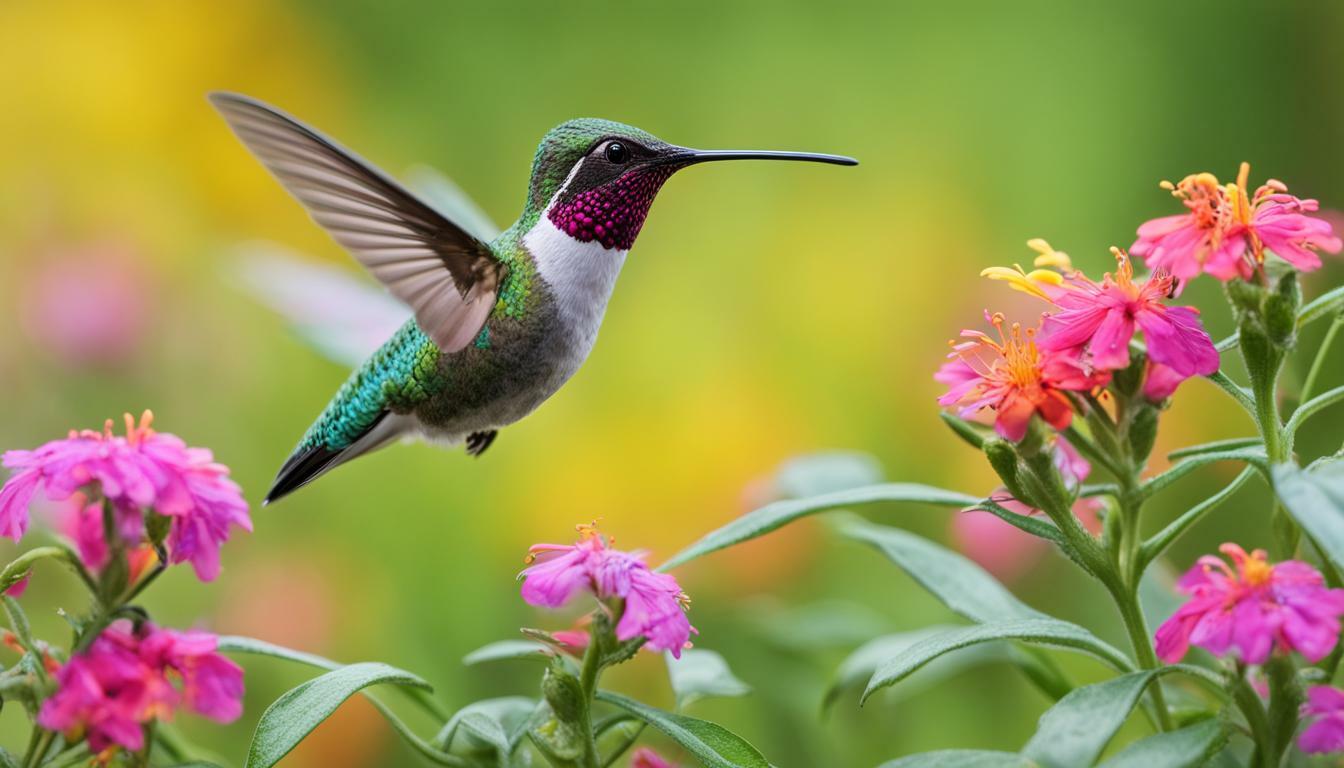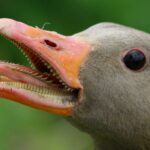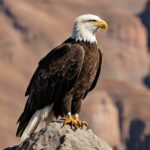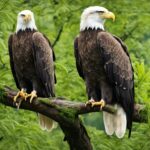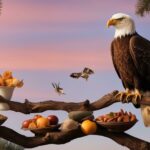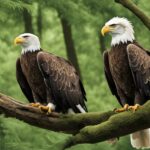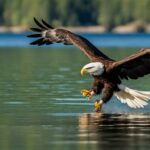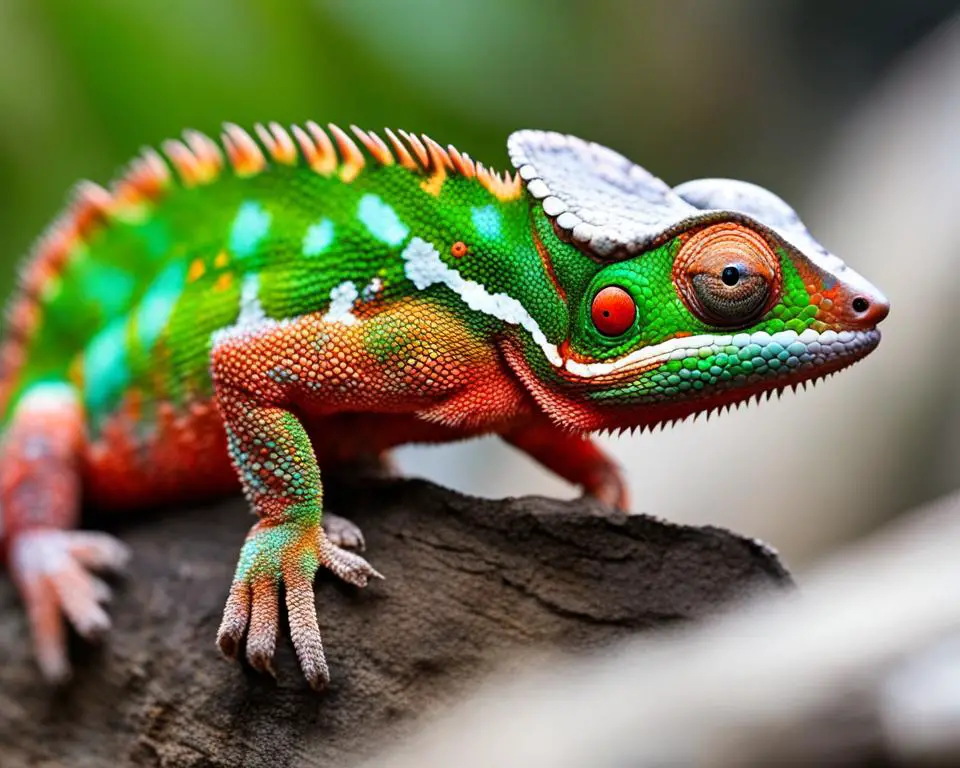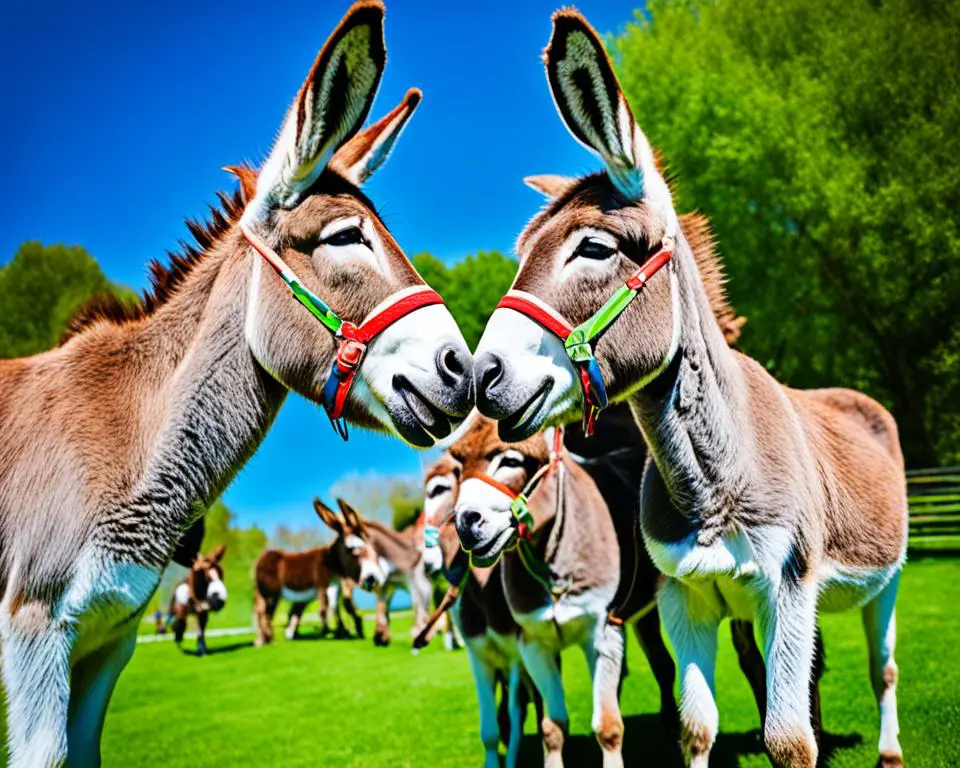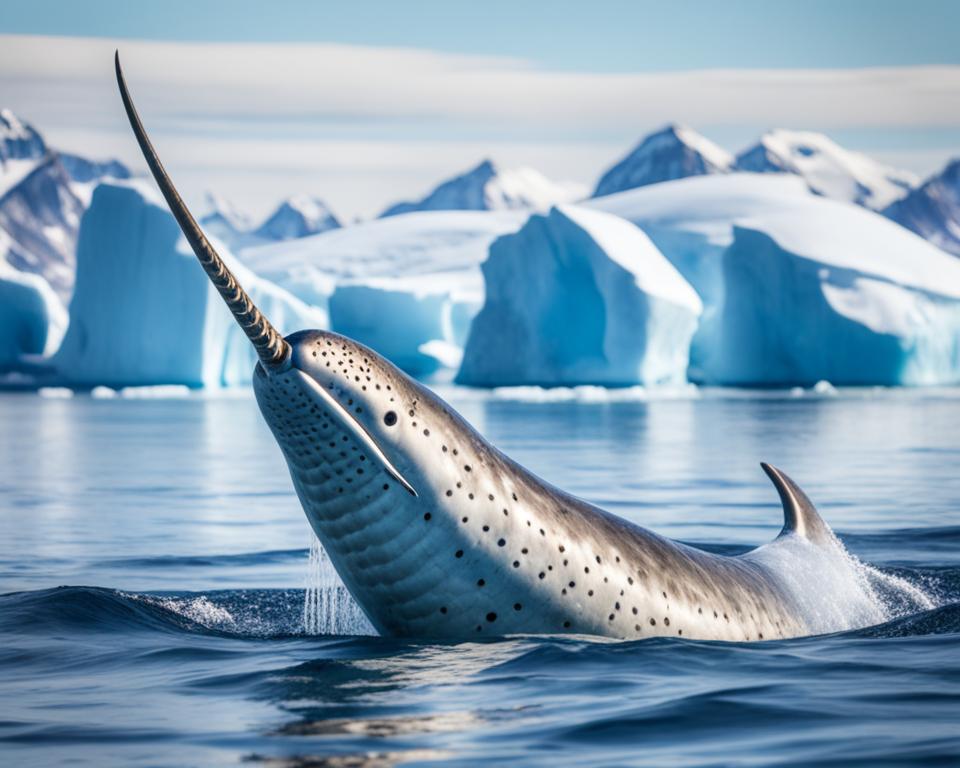If you’re a bird lover, you’ve likely marveled at the sight of hummingbirds darting around your garden. These tiny birds are known for their ability to hover mid-air and their love for sweet nectar. But have you ever wondered if hummingbirds eat bugs?
The answer is yes! While most people associate hummingbirds with their love of nectar, some species of hummingbirds are actually insectivorous, meaning they feed primarily on insects.
Key Takeaways:
- Hummingbirds do eat bugs, despite their primary diet of nectar.
- Some species of hummingbirds are insectivorous and rely heavily on insects for their nutrition.
Understanding Hummingbirds’ Diet
Hummingbirds are known for their love of nectar, but did you know that they also feed on insects? Insects are a crucial part of a hummingbird’s natural diet, providing them with additional nutrients that nectar alone cannot.
In fact, many hummingbirds are insectivorous, meaning they frequently consume bugs as a significant part of their diet. While nectar is their primary source of nourishment, insects such as mosquitoes, gnats, and fruit flies make up a substantial portion of their diet.
Hummingbirds have several methods of capturing insects, including perching and hovering. When perching, hummingbirds can snatch insects right out of the air, while hovering allows them to pick insects off of plants and flowers. Their long, thin beaks and tongues are also perfectly adapted for probing into small crevices to reach hidden insects.
It’s essential to note that not all hummingbirds feed on insects. Some species, such as the Ruby-throated hummingbird, do not rely on insects as heavily and primarily feed on nectar and tree sap. However, even for these species, insects can still play a significant role in their diet.
A diverse diet is crucial for a hummingbird’s health and survival, which is why they rely on a variety of food sources besides nectar and insects. They also consume pollen, small spiders, and even tree sap, providing them with a well-rounded diet that offers all the necessary nutrients they need to thrive.
Bug Interaction with Hummingbirds
Hummingbirds are known for their love of sweet nectar, but did you know that they also eat insects? Bugs are an important part of the hummingbird diet, providing additional nutrients that they cannot get from nectar alone.
Hummingbirds capture insects in a variety of ways, such as by using their long tongue or by hovering in mid-air and plucking them from leaves or spiderwebs. Insects can provide a significant source of protein and fat, especially during breeding season when hummingbirds need more energy.
Some of the insects that hummingbirds consume include mosquitoes, gnats, fruit flies, and even spiders. Insects can also affect hummingbird behavior and feeding patterns. For example, when bugs are scarce, hummingbirds may spend more time at a feeder or rely more heavily on nectar for sustenance.
It’s important to note that not all hummingbirds are insectivorous, meaning they do not all rely on insects for their diet. However, even those that primarily feed on nectar will still consume insects occasionally as a supplement to their diet.
Whether you are a bird enthusiast or simply enjoy watching hummingbirds flit about your garden, understanding their diet and interactions with bugs can help you provide the best environment for these fascinating creatures.
Other Food Sources for Hummingbirds
While nectar and insects are the primary food sources for hummingbirds, they also rely on a variety of other natural food sources. Here are some examples of what hummingbirds eat besides nectar:
- Tree Sap: Hummingbirds have been observed consuming sap from trees, particularly on migratory routes. The sap provides an additional source of energy and nutrients.
- Pollen: Some hummingbird species feed on pollen from flowers, which provides them with protein and fats in addition to sugars.
- Small Spiders: Although not a common part of their diet, hummingbirds have been observed catching and eating small spiders for their high protein content.
A diverse diet is essential for hummingbirds to maintain optimal health and survival. By incorporating a variety of food sources into their diet, they can obtain all the necessary nutrients they need to sustain their active lifestyles and high metabolic rates.
Bug Interaction with Hummingbirds
Hummingbirds are known for their sweet nectar diet, but did you know they also enjoy eating bugs? Insects play an important role in the diet of hummingbirds as they provide additional nutrients that nectar alone cannot provide.
Insects are a great source of protein, which is essential for hummingbirds during the breeding season. Insectivorous hummingbirds, such as the Black-chinned Hummingbird and the Ruby-throated Hummingbird, have longer bills and larger bodies that allow them to capture and consume bugs more easily.
The Benefits of Bugs in Hummingbirds’ Diet
The inclusion of insects in their diet helps to improve hummingbirds’ overall health and energy. Bugs are also a great source of vitamins and minerals that nectar alone cannot provide. Consuming insects may also reduce the amount of time hummingbirds spend foraging for nectar, allowing them to conserve energy.
While hummingbirds typically feed on small insects, they have also been known to prey on larger insects such as praying mantises or bees. This can provide a challenge for the hummingbirds, but also demonstrates their adaptability to a variety of food sources.
Impact of Bugs on Hummingbird Behavior
The inclusion of insects in their diet can also impact their behavior and feeding patterns. For example, during the breeding season, insectivorous hummingbirds may spend more time foraging for insects to provide for their young. Additionally, consuming insects may also impact hummingbirds’ migration patterns as they seek out areas with higher insect populations.
Overall, the consumption of insects is an important part of hummingbirds’ natural diet. Insects provide essential nutrients that nectar alone cannot provide and can impact their behavior and feeding patterns. Next time you see a hummingbird, remember that they are not just sipping on nectar, but also on bugs!
Can I Leave Hummingbird Nectar Out for a Long Time Without It Going Bad?
Yes, hummingbird nectar can spoil if left out for too long. The specially formulated mixture of sugar and water ferments over time, leading to the growth of harmful bacteria. To ensure the health and safety of hummingbirds, it is crucial to regularly replace the nectar and clean the feeder. So, does hummingbird nectar spoil?? Yes, it does if not properly maintained.
FAQ
Q: Do hummingbirds eat bugs?
A: Yes, hummingbirds do eat bugs. While their primary food source is nectar, they also consume insects for additional nutrients. Some species of hummingbirds, known as insectivorous hummingbirds, rely heavily on insects as part of their diet.
Q: What role do insects play in a hummingbird’s diet?
A: Insects provide essential nutrients for hummingbirds, including protein and fats. They are a valuable source of energy, especially during breeding season when hummingbirds require additional nutrients. Insects also contribute to the hummingbird’s overall health and vitality.
Q: How do hummingbirds interact with bugs?
A: Hummingbirds capture insects by hovering in mid-air or snatching them from foliage using their long, thin beaks. They may also catch bugs that are attracted to flowers while they are feeding on nectar. Bugs serve as a supplementary food source and contribute to the hummingbirds’ overall diet and foraging behavior.
Q: Besides bugs and nectar, what else do hummingbirds eat?
A: Hummingbirds also rely on other food sources such as tree sap, pollen, and small spiders. These additional food sources provide them with a diverse diet, ensuring they receive a wide range of nutrients necessary for their survival and well-being.

